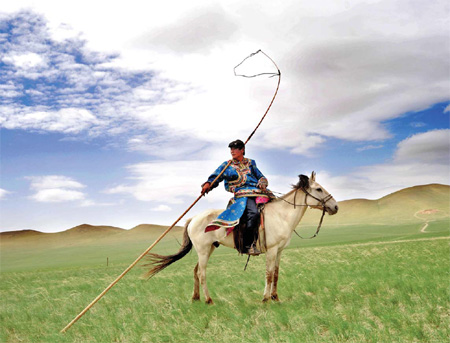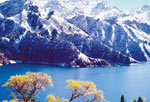Tips and Articles
Grass is greener
Updated: 2011-05-06 14:32
By Yan Yiqi (China Daily European Weekly)
 |
|
China's Mongolian ethnic group in Inner Mongolia has a strong connection with local grasslands and horse riding is still a major passion. Provided to China Daily |
 |
In the northern most part of China, lies a piece of land, which breeds some of the most passionate people of this nation. These special people are fond of dancing, singing, drinking, wrestling and horse riding. And it was a land that nurtured the supreme rulers of China 700 years ago.
Covering an area of 1.18 million sq km, the Inner Mongolia autonomous region is the third largest subdivision of China, with diversified landscapes and large storage of mineral resources. Forests, grasslands, lakes and farmlands provide enormous travel attractions to tourists who are looking for a taste of the wilderness.
Among all the landscapes, the grasslands are the most famous feature of Inner Mongolia. Imagine the thrill of galloping a horse on the boundless grassland, and later for dinner, taking a big bite of delicious roasted lamb.
When night falls, local people set up bonfires in front of their yurts, which are portable, wood lattice-framed dwellings. The locals will sing and dance to music played by traditional Mongolian instrument, the matouqin, a two-stringed instrument with its head carved into the shape of a horse head.
Inner Mongolia is a multi-ethnic group region with the Mongolian ethic group and the Han people accounting for the majority of this region's population. However, there are another 48 ethnic groups that also live in this vast region of northern China.
Visitors will discover that the names of places in Inner Mongolia are spelled differently from those of other places in China. Most of the names there come from the Mongolian language.
The following are the five must-dos in Inner Mongolia.
1. Xilin Gol Grassland
In Mongolian, "Xilin Gol" means river between the hills. The grassland is located in central Inner Mongolia's Xilin Gol League. Listed as "International Biosphere Reserve" by the UNESCO in 1987, it is one of the best examples of grasslands in China, and perhaps even in the world.
The grassland enjoys 180,000 sq km of usable land and is capable of raising 10 million livestock. The non-polluted meat of Xilin Gol lamb and cattle are warmly welcomed in domestic and overseas markets.
While visiting the grassland, visitors can have a taste of the freshest meat of the famous Xilin Gol lamb.
The grassland is also a hotbed of diversified plant species. When the summer comes, the grassland flourishes to look like a green ocean with more than 1,200 kinds of plants growing together.
Horse riding in Xilin Gol is a must.
2. Dazhao Temple
The temple is located in the south of Hohhot, the capital city of the Inner Mongolia autonomous region. It is the oldest building and the largest Lamaist temple of this region. The construction of the temple was completed in 1580 during the Ming Dynasty (1368-1644).
Dazhao Temple gained its fame from a visit by the third Tibetan Dalai Lama in 1586, when he came to dedicate prayers to Buddha. After the ceremony, Hohhot became a religious center for peopl
e in Inner Mongolia who came to worship at this temple.
The temple is now a popular tourist attraction because of the impressive buildings, splendid statues, delicate frescos, musical instruments and fine collection of Buddhist scriptures.
Specials

Bin Laden dead
The world's most wanted man was killed in a US raid in Pakistan.

British Royal Wedding
Prince William and Kate Middleton married at Westminster Abbey in a royal occasion of dazzling pomp and pageantry.
Best wishes

The final frontier
Xinjiang is a mysterious land of extremes that never falls to fascinate.